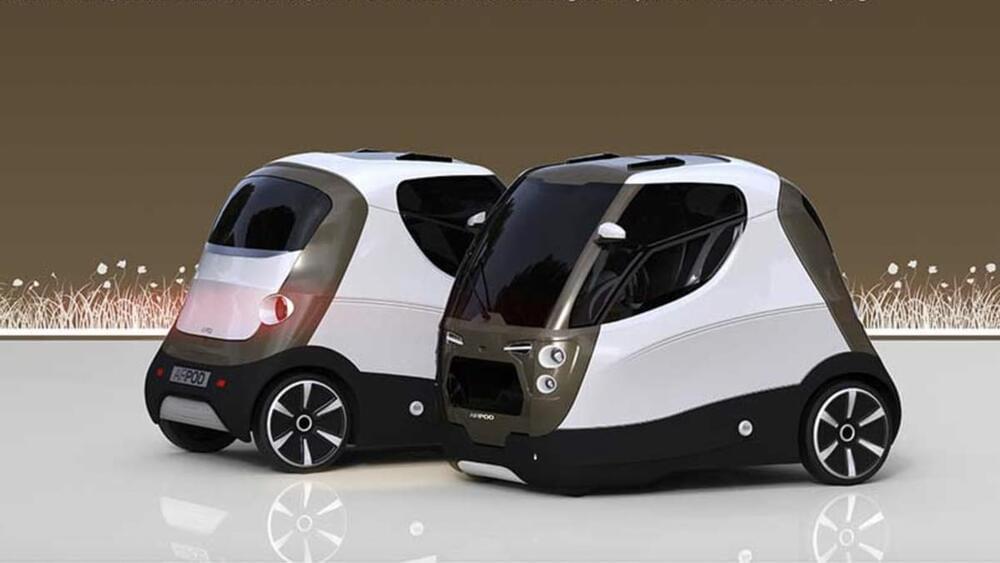
Get the latest international news and world events from around the world.




This tiny handheld precision 3D scanner is the ultimate reverse-engineering instrument
https://www.kickstarter.com/projects/2125914059/revopoint-mi…m-precison Designers, architects, engineers, we’re all collectively known as creators. The Revopoint MINI handheld 3D scanner just amplifies our creating (or rather re-creating) abilities. Designed to be about the same size as a podcasting microphone (with the tripod and all), Revopoint MINI is an industrial-grade handheld 3D scanner with a staggering precision of 0.02mm. It uses a Class 1 Blue Light that lends it its high accuracy, while still allowing it to be safe on the skin. Just hold it against the object you want to scan and wave it around and like magic, the Revopoint MINI gives you a high-accuracy 3D model, complete with tolerances, textures, and even color information. This makes it perfect for a wide degree of applications, from 3D modeling and animation to medical design, automotive design, jewelry design, even archaeology.


Ionic Liquid-Based Reservoir Computers: Efficient and Flexible Edge Computing
Researchers from Japan design a tunable physical reservoir device based on dielectric relaxation at an electrode-ionic liquid interface.
In the near future, more and more artificial intelligence processing will need to take place on the edge — close to the user and where the data is collected rather than on a distant computer server. This will require high-speed data processing with low power consumption. Physical reservoir computing is an attractive platform for this purpose, and a new breakthrough from scientists in Japan just made this much more flexible and practical.
Physical reservoir computing (PRC), which relies on the transient response of physical systems, is an attractive machine learning framework that can perform high-speed processing of time-series signals at low power. However, PRC systems have low tunability, limiting the signals it can process. Now, researchers from Japan present ionic liquids as an easily tunable physical reservoir device that can be optimized to process signals over a broad range of timescales by simply changing their viscosity.

Scientists think they have found a major cure: ‘The first time this has happened in the history of cancer’
New findings were published in the New England Journal of Medicine on Sunday that found all rectal cancer patients given a certain bill were cancer-free.
The New York Times reported the findings, noting that the sample size was incredibly small, with just 18 people but the results were unbelievable.
“I believe this is the first time this has happened in the history of cancer,” said Dr. Luis A. Diaz Jr. of Memorial Sloan Kettering Cancer Center.

Life on Mars: A critical tool in the search for aliens is delayed
We won’t give up on the search for life on Mars.
The situation developed in the next days and weeks, leading to a series of emergency meetings. On March 17, the European Space Agency (ESA)’s council and member states decided to suspend our mission. We won’t know for sure what happens next until a study by ESA and industry partners reports back in July — but there are causes for optimism.
The search for subterranean life on Mars
The Rosalind Franklin rover is unique among all the rovers planned for Mars. It can drill deeper than any before it — up to 2 meters below the harsh surface. This is important as the subsurface is protected from harmful radiation and could therefore contain signs of past or present life.

First Mexican-born woman travels to space with Blue Origin
CNN — A rocket built by Jeff Bezos’ Blue Origin carried its fifth group of passengers to the edge of space, including the first-ever Mexican-born woman to make such a trek.
The 60-foot-tall suborbital rocket took off from Blue Origin’s facilities in West Texas at 9:26 A.M ET, launching a group of six people to more than 62 miles above the Earth’s surface — which is widely deemed to make the boundary of outer space — and giving them a few minutes of weightlessness before parachuting to landing.
Most of the passengers paid an undisclosed sum for their seats. But Katya Echazarreta, an engineer and science communicator from Guadalajara, Mexico, was selected by a nonprofit called Space for Humanity to join this mission from a group of thousands of applicants.
How to watch SpaceX launch a cargo ship to the ISS this week
This week, a SpaceX Cargo Dragon spacecraft will travel to the International Space Station carrying supplies and research. Here’s how to watch.